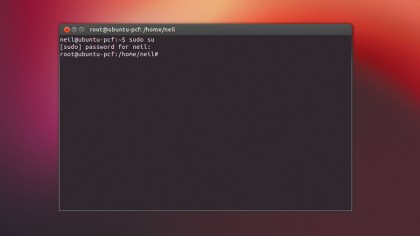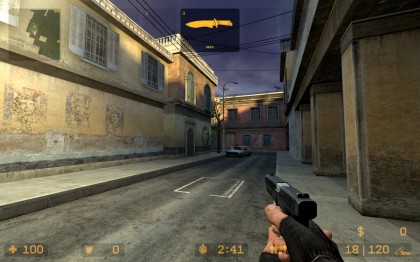Can gaming be the turning point for Linux on the desktop?
We'll talk at length on just how to get drivers updated in the box on this page, but to get playable 3D frame-rate performance you'll need to grab the updated ones from your card's manufacturer.
Now, when it comes to updating, that brings on another interesting side of Linux…
Terminal illness

If you manage to install Linux without seeing 'the terminal' then you're mistakenly using a Mac. Anyone who tries Linux will discover that at some point they'll have to contend with the terminal and yes, it's as bad as it sounds.
Let's be truthful, all operating systems have a command line interface - it's the base way of running commands. Even from the days of the Atari ST and Amiga, most companies realised that no one wants to use them. Almost thirty years ago, mankind could manufacturer a computer that held a full GUI OS on ROM, so you didn't have to use a bloody command line.
Apple, with its Macintosh, elegantly embraced the new graphical interface, so almost every program - bar the most low-level - offered a graphical interface for us puny humans to use. Linux followed its own path, stubbornly sticking to terminal input as a primary system. So, even today with Ubuntu - which has been diligently designed to be as easy to use as possible - there's no avoiding the terminal. At some point, that black slab of type-based interface is going adorn your screen, like a gravestone marking the death of your happiness.
Maybe we're being a little dramatic here, but when you've spent most of your computing life in a GUI, remembering and typing commands can be a shock. It could also make you look like some super hacker from the movies, but maybe that's just us...
There is, of course, a valid reason for requiring the terminal and that's because the graphical element of Linux is delivered by a system called X Windows or X11. It's a standalone system, badly described as bolted on to the GNU/Linux ecosystem - basically you can't be guaranteed it'll be available.
Sign up for breaking news, reviews, opinion, top tech deals, and more.
As Linux was developed, the majority of commands have to assume only terminal input will be available and this goes for a lot of the low-level OS updates and install routines. It simply means that for many of the more basic processes, a terminal is the primary input and output. Even installing the Steam for Linux Beta will involve a segment of updates, where you'll be endlessly typing [Y] into a terminal.
More critically, if anything should go wrong - other than just saying "Sod you, Torvalds!" and reinstalling - you'll be using a terminal to do some serious fire fighting and bug squishing. It's at this stage you realise just how powerful it can be, as you're able to install updates and entire programs over the internet from a single command.
It's also always there, unlike mother, so if the worst should happen pressing [Ctrl] + [Alt] + [F1] always opens a terminal, and [Ctrl] + [Alt] + [F7] takes you to the first X11 interface. So if you know what you're doing, even with broken graphics drivers, it's possible to fight your way back to a working system. Hurrah, we love the terminal!
Games, you said?

Did someone make the mention of games earlier? The big great hope for Linux gaming comes in the form of Steam for Linux. Currently just out of beta, we take a quick look at the steps you need to get this installed.
Valve has done a reasonable job of making it easy to install, but even so it hardly fills you with confidence. The beta is officially only aimed at Ubuntu 12.04, though you can obviously try to install it on any flavour of Linux your heart desires, and it will work on many.